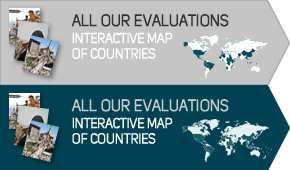Description of project
This evaluation was listed by UNICEF as one of the best evaluations in recent years.
The evaluation was commissioned by the Inter‐Agency Standing Committee (IASC), funded by OCHA and undertaken by a team of four evaluators between January and March 2011.
The 2010 floods in Pakistan were both the worst floods in Pakistan´s history and one of the major disasters of the 21st century, in terms of geographical scale, caseload of affected population, and economic impact. The disaster affected 78 out 122 districts in Pakistan and one‐tenth of its nearly 200 million population and at one point one‐ fifth of the country was submerged by flood waters.
In response to this disaster, the international community implemented what would become the largest emergency operation ever staged by the humanitarian community, in collaboration with the local population, Pakistani diaspora, local organizations, philanthropists and military and civilian authorities. Initially, four clusters (food, health, WASH and shelter + support services such as telecom and logistics) were rolled out for life saving activities, followed by the roll out of all other clusters within weeks.
Overall, the response was generally viewed as positive; there were no large scale deaths following the disaster, and the response was successful in preventing both a major food crisis and an epidemic outbreak. Rapid response mechanisms and the initially generous response from donors were praised; however, other non life‐saving and early recovery interventions were slower to be deployed, and funding commitments for these elements of the response were lower. Co-ordination and priotisation problems were also identified.
The aim of the evaluation was to provide a snapshot of the current situation in Pakistan, and participatory feedback to those managing and executing the response, with the specific goals of 1) assessing the implementation of the humanitarian response to date and 2) providing real-time feedback to the Humanitarian Country Team, with the aim of Influencing ongoing operational planning, including corrective action where necessary. The evaluation was designed to be participatory, incorporating the insights of a wide range of key stakeholders as well as beneficiaries, and to generate utilization-focused findings and recommendations in order to allow for the maximum impact on the operation of the response.
The evaluation followed a deductive analysis based on a mixed methods approach for data collection. The evaluations team visited Pakistan twice. The first trip comprised an extended field visit to three of the worst affected Provinces, with semi‐structured individual interviews and group interviews with 686 people from the affected population and some 1,107 key stakeholders including representatives from UN agencies, the Red Cross Movement, international and national non‐governmental organizations (INGOs), federal and local government, the military and donors. Field visits to 20 different locations in three different provinces and the Federal Capital also allowed for direct observation of the humanitarian coordination process at district, provincial and federal level, as well as the outcomes of relief and recovery responses.
The second trip was undertaken to facilitate four workshops (three provincial and one national) with key stakeholders. During these workshops conclusions and recommendations presented in the draft report were validated, prioritized, organizations responsible for implementation and timelines were defined. Finally, the results were presented to IASC representatives in order to provide both operational feedback for the current response and strategic feedback to the humanitarian system as a whole for the purpose of lesson learning.

Share this